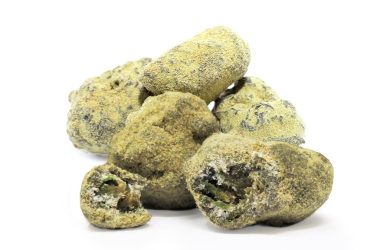“How long does smog take? The answer may surprise you. Smog, a dangerous air pollutant, can form in a matter of hours under the right conditions. Understanding the factors that contribute to smog formation is crucial in combatting its harmful effects. In this blog article, we delve into the science behind how long it takes for smog to develop and what measures can be taken to reduce its impact on our environment.”
How Long Does Smog Take to Form and Disperse?
Welcome, young environmental enthusiasts! Today, we are going to explore the fascinating topic of smog. You may have heard about smog in the news or learned about it in school, but do you know how long it takes for smog to form and disappear? Let’s dive into this important subject and discover the answers together!
What is Smog?
Before we discuss how long it takes for smog to form and disperse, let’s first understand what smog is. Smog is a type of air pollution that is made up of smoke and fog, hence the name “smog.” It is often seen as a thick haze hanging over cities, especially during hot summer days. Smog is primarily composed of pollutants like nitrogen oxides, volatile organic compounds, and particulate matter, which can be harmful to our health and the environment.
How Does Smog Form?
Now, let’s talk about how smog forms. Smog is mainly formed through a chemical reaction between pollutants emitted from vehicles, factories, and other sources, and sunlight. This reaction creates ground-level ozone, which is a key component of smog. In addition to ozone, smog also contains fine particles and other pollutants that contribute to its harmful effects.
Primary Pollutants
The primary pollutants that contribute to smog formation include nitrogen oxides (NOx) and volatile organic compounds (VOCs). These pollutants are released into the air from sources such as car exhaust, industrial emissions, and gasoline vapors. When these pollutants react with sunlight and heat, they form ozone and other smog components.
Secondary Pollutants
Secondary pollutants, such as sulfur dioxide and particulate matter, can also contribute to smog formation. These pollutants undergo further chemical reactions in the atmosphere, leading to the production of additional smog components. The combination of primary and secondary pollutants results in the formation of smog layers that can linger over cities for extended periods.
How Long Does Smog Take to Form?
Now, let’s address the question, “How long does smog take to form?” Smog formation is a complex process that can occur relatively quickly under the right conditions. In urban areas with high levels of pollution, smog can develop within a matter of hours when pollutants are released into the air and interact with sunlight. Factors such as temperature, wind patterns, and the concentration of pollutants play a significant role in how quickly smog forms.
Urban Heat Island Effect
The urban heat island effect, which refers to the higher temperatures found in cities compared to rural areas, can accelerate smog formation. The heat island effect, combined with the concentration of pollutants in urban areas, creates conditions that are conducive to the rapid generation of smog. As a result, cities often experience higher levels of smog compared to suburban or rural regions.
Meteorological Conditions
Meteorological conditions, such as temperature inversions and stagnant air masses, can also influence how quickly smog forms. During a temperature inversion, warm air traps cooler air and pollutants near the ground, preventing them from dispersing into the atmosphere. This stagnant air allows pollutants to accumulate and react with sunlight, leading to the formation of smog within a relatively short period.
How Long Does Smog Take to Disperse?
Now that we’ve discussed how smog forms, let’s turn our attention to how long it takes for smog to disperse. Unlike its formation, the dispersion of smog can vary depending on several factors, including weather conditions, air quality regulations, and human activities.
Weather Conditions
Weather conditions play a critical role in the dispersal of smog. Factors such as wind speed, temperature, and precipitation can impact how quickly smog dissipates. For example, strong winds can help disperse smog by moving pollutants away from urban areas and allowing fresh air to circulate. On the other hand, calm weather conditions can prolong the presence of smog by trapping pollutants in one location.
Air Quality Regulations
Air quality regulations and emission control measures also play a significant role in the dispersion of smog. Governments and environmental agencies implement policies to reduce the emission of pollutants and improve air quality. These regulations help limit the formation of smog and contribute to its eventual dispersal by reducing the concentration of harmful pollutants in the atmosphere.
Human Activities
Human activities, such as driving cars, using energy sources that produce pollutants, and industrial processes, can impact the dispersal of smog. By reducing our carbon footprint and adopting sustainable practices, we can help minimize the formation of smog and contribute to its quicker dispersion. Simple actions like carpooling, using public transportation, and conserving energy can make a big difference in reducing smog levels in our communities.
In conclusion, smog is a harmful air pollutant that forms through the interaction of pollutants with sunlight and heat. While smog can develop quickly, its dispersion depends on various factors such as weather conditions, air quality regulations, and human activities. By understanding how smog forms and the factors that influence its dispersal, we can work together to combat air pollution and create a healthier environment for all living beings. Remember, every small action counts in protecting our planet from the impacts of smog!
Thank you for joining me on this educational journey about smog. Stay curious, stay informed, and let’s continue to explore the wonders of our natural world together!
How Long Does A Smog Check Take? Frequently Asked Smog Testing Questions – Part IV
Frequently Asked Questions
How does smog form and how long does it last?
Smog forms from the reaction of pollutants in the atmosphere, particularly from vehicle emissions and industrial activities. The duration of smog can vary depending on factors such as weather conditions, emission levels, and geographical location. In general, smog can last for several days to a few weeks.
What are the effects of smog on health, and how long do these effects last?
Exposure to smog can lead to various health issues such as respiratory problems, irritation of the eyes, and aggravation of existing conditions like asthma. The effects of smog on health can last for as long as the smog persists in the environment, and individuals should take necessary precautions to minimize exposure.
Can smog dissipate naturally, and if so, how long does it typically take?
Smog can dissipate naturally through mechanisms like wind dispersion and rainfall that help to remove pollutants from the air. The time it takes for smog to dissipate naturally varies depending on the intensity of the smog, weather conditions, and the presence of pollutants in the air. Generally, it may take a few days for smog to clear up naturally.
Final Thoughts
In conclusion, smog formation can occur rapidly in urban areas due to human activities. The duration of smog formation varies depending on factors such as weather conditions and emissions. How long smog takes to develop can range from a few hours to several days. Understanding the process and contributing factors is key to implementing effective solutions to reduce smog pollution.












